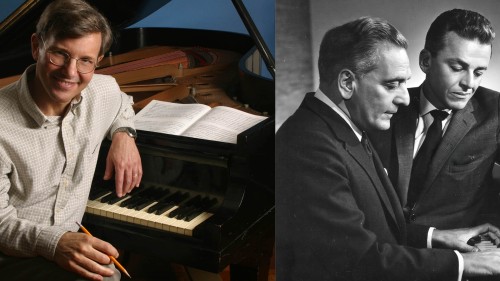
What Makes It Great? with Rob Kapilow
Songs from My Fair Lady, Camelot, and Brigadoon: Lerner & Loewe’s Greatest Hits
This site uses cookies to measure our traffic and improve your experience. By clicking "OK" you consent to our use of cookies.
Please be aware that latecomers will be seated in the balcony at the late seating interval. At intermission, latecomers will be able to take their ticketed seats.
German baritone Matthias Goerne makes his Celebrity Series debut alongside the always brilliant Daniil Trifonov, a Series mainstay, for a powerful recital program that beautifully grapples with life’s biggest questions. Goerne and Trifonov bring profound depth to one of Schubert’s farewell masterpieces, Schwanengesang (“Swan Song”), and his earlier Piano Sonata in G Major, D. 894. The Sonata, a serene and witty work, was the last piano sonata published in the composer's lifetime.
Matthias Goerne has built a distinguished career across opera, recital, and orchestral stages, earning acclaim for his deep engagement with Schubert Lieder. A master interpreter of the composer’s song literature, he has recorded more than a dozen Schubert albums in collaboration with some of the world’s finest pianists, including Daniil Trifonov.
Trifonov, a Series favorite known for his many solo and collaborative performances, partners with a vocalist for the first time on our stages. In addition to joining Goerne for Schubert’s Schwanengesang, he’ll command the stage alone for Schubert's witty, luminous, and poignant Sonata in G Major (D. 894).
It’s a debut and collaboration we’re excited to offer you! Let Goerne and Trifonov be your guides for these moving and thought-provoking works.
“Goerne is one of the greatest singers performing today”
The Boston Globe
“Goerne’s instrument, with its velvety crevices, catches darkness and light. (...) Few artists are so temperamentally suited to this repertoire - and fewer still possess such a plush, darkly inviting voice.”
The New York Times
During a large part of the nineteenth century, the piano sonata did not hold the place in concert life that it now has, where it is understood as a recitalist’s equivalent of a symphony, a large and generally weighty work consisting of sizable independent movements sometimes linked or connected by a musical device or by sentiment or spirit.
We know how concert-life bypassed Schubert, but even Beethoven’s piano sonatas were not programmed in concerts either, for a long time. As late as 1848, the manager of a serious concert series in London would not allow Beethoven’s sonatas on his programs because they were not “public” music. Yet before the century was over, the famed Hans von Bülow made a career of a program consisting of Beethoven’s last five sonatas, which formidably tested the endurance of both performer and audience members. Schubert certainly wrote his piano sonatas for private hearing, and could not expect another kind of venue. In addition, he was, as he once said, “an admirer and worshipper” of Beethoven and wanted to try his hand at almost everything for which there was a model in the older man’s work.
Schubert’s sonatas did not find their proper place in the concert repertoire until long after Beethoven’s had done so. Ideas about musical form changed rapidly and radically during the nineteenth century, and during that time, Schubert’s sonatas were often criticized as either too free or not free enough. Because they puzzled musicians, they were simply never performed; not until the centennial year of 1928 were Schubert’s sonatas thoroughly reconsidered; after that time, they became widely performed and, finally, loved.
This G-major Sonata had, in the meantime, made its way somewhat further into the world than many of the others, perhaps because of a liberty that the publisher of the first edition had taken with it in 1827. He gave it an ambiguous title: calling it Fantasy, he referred only to the first movement with his title; the other movements appeared as three independent pieces. It was a ruse, of course, but it worked, making the music seem more easily accessible.
Ironically, this sonata is an enormously difficult composition not so much for the fingers as for the musical mind of the performer, who must control, for example, the almost pulseless music of the first movement, Molto moderato e cantabile. The structure is conventional, but the apparent simplicity of the musical ideas is deceptive. In the long measures of the first subject, the listener must somehow be made to sense the rhythmic content of a motionless chord, to wait on edge while the chord is stretched out little by little into a long, slow melody, so huge that it can hardly be taken in. Later, there are displaced stresses, and the whole is complicated by the fact that the dynamic level rarely reaches forte, loud, except in the development section, which begins with a ringing fortissimo (very loud) and increases in volume from there.
The remaining three movements are not as problematic, nor are they on the same large scale, but they maintain the nobility of expression of the first. The second movement, Andante, again contrasts recurring subjects in styles that we have come to think of as Schubertian and Beethovenian. Next comes a Minuet, Allegro moderato, with Schubert’s typical repeated-note chords as a feature of the opening tune, and a hushed, contrasting central trio section like a charming, distant folk dance. The Allegretto finale is the nearest we come to really fast music in the sonata. It is a spacious rondo in which the main theme is a short phrase whose second part, which contains more of the repeated chords, seems to be in danger of breaking away from the first.
©2025, Susan Halpern
As his tragically short life neared its end, a furious burst of creative energy exploded in Franz Schubert, who had experienced little success in his life. During his last eight months, he composed his Mass in E-flat, a large number of songs, including the fourteen collected into a cycle as Schwanengesang (“Swan Song”), three great piano sonatas, and the glorious Quintet, Op. 163, D.956.
Schubert died a pauper, known only to a small circle, although in his last two years of life, he did experience a significant increase in his popularity and even received some financial rewards. Schubert had a unique voice and his music is the product of one of the most fertile and felicitous imaginations in musical history. In his short life, he transformed the art of song into what we now know as the Art Song, creating hundreds of distinguished settings of the works of the poets of his time. In addition to his hundreds of songs, he composed dozens of sonatas and sonatinas for many instruments, as well as string quartets, piano sonatas, chamber music with piano, and symphonies.
In Schubert, as in Mozart and Bach, the technical demands are expressed not in notes-per-square-measure, but in the more refined metrics of phrasing, color, voicing, rhythm, texture, and timbre. Schubert’s music contains a mystical power and even qualities of the magical. He has captured the human experience in its variety from the sweet to the bitter in each of his works. A musical giant within the Romantic aesthetic, his work expresses a penetrating universality originating in the deeply personal.
The fourteen songs that make up Schwanengesang cannot truly be called a song cycle because they do not have a narrative thread. The songs are a collection that Schubert composed in 1828, just before his death. He quite definitely did not give the group of songs a title, and certainly not the singularly inappropriate “Swan-song” by which it is known today. Thomas Haslinger published the group the following year, and it was he who gave the work the name Schwanengesang, thinking the collection would sell well if he marketed it as Schubert’s “last farewell to song.”
The collection sets songs by three contemporary German poets; the first seven songs have integrity as a group and are based on poems by Ludwig Rellstab (1799-1860), the multitalented writer and music critic famous for entitling Beethoven’s Op. 27, no. 2 sonata, “Moonlight.” The seven Rellstab songs are about lost love and nature. The first song, “Liebesbotschaft” (“Message of love”), gives the piano the role of rippling brook, while the vocalist takes on the character of the swain-in-love, whose anxieties can be felt beneath the surface. No. 2, “Kriegers Ahnung” (“Warrior’s foreboding”) is not as positive in spirit. The opening and closing frame of the story can be understood as the steps of a funeral march, while within, the piano follows racing beats of the soldier/lover’s heartbeat, underscoring an undertone of worrying and a sense of fatefulness in the private meaning of the singer’s words.
“Frühlingssehnsucht” (“Spring longing”) paints the breathless enthusiasm of the love-besotted singer who pauses, seemingly haunted, at each verse’s end to ask himself a question. “Ständchen” (“Serenade”) is one of Schubert’s best-known melodies; in the song, the stillness of the night still gives a sense of the lover’s heightened awareness of the nocturnal sounds of nature. The throbbing piano pulses of “Aufenthalt” (“Resting place”) paint the natural world as less distant, more a participant in the lover’s sufferings.
Even more desolate is the mood of “In der Ferne” (“In the distance”), with its theme of exile conveyed through a sparseness of texture and the obsessive repetition of melodic phrases. The Rellstab set concludes with “Abschied” (“Farewell”), a joyful, impulsive evocation of the lover riding away from town, the horse’s playful prancing evident in the staccato in the piano part.
The six that follow are settings of Heinrich Heine (1797-1856) poems; Heine was a poet who used humor and irony to articulate his beliefs. Heine’s poems are more compact than those of Rellstab. Many of them have as their subject the theme of alienation. “Der Atlas’ (“Atlas”) is the lament of the god-man who bears the weight of the world on his shoulders. Schubert uses the dotted rhythms and the piano accompaniment in the low range of the keyboard to indicate the feelings and the characterization. In the spare “Ihr Bild” (“Her portrait”), the lover’s desolate study of his beloved’s portrait is brought to life in unison passages between the piano and the voice.
Schubert`s little sea-shanty setting of “Das Fischermädchen” (“The girl fisher”) captures the role-reversal and its irony; here it is the male who passively “sits dreamily on the shore,” trying to attract the strong, capable girl fishing for her living to come to him. A much more seriously poetic watery scene is summoned up in “Die Stadt” (“The town”); the morning sun glinting off the waves is here set against the dark and distant profile of the town where the singer’s pain began.
Heartbreak overtakes the mood in “Am Meer” (“By the sea”), a description of the destructive and painful effects of love, as the deadly poison eats away at the lover from the inside. Even though the tale initially sets a peaceful seaside scene, deep and different emotions emerge, emphasized by the piano’s melodramatic tremolos. In “Der Doppelgänger” (“The ghostly double”), a man stands at night in front of the house where his love formerly lived. He identifies a ghostly shape equally absorbed in sad memories. The slow-moving piano chords do not provide solace to the lonely singer, who, with horror, recognizes he is becoming mad. The song has no definable lyrical line, which reinforces its message of hopelessness.
Johann Gabriel Seidl (1804-1875), an Austrian imperial bureaucrat, wrote the words of the last song. Schubert never intended “Die Taubenpost” (“The carrier pigeon”), to be included in the song-cycle, even though it appears in the same manuscript and was published as part of the cycle. (Tellingly though, it was written on different paper, but Tobias Haslinger bound it together with the original in 1829, when he published the first edition.) When Deutsch revised the edition in 1978, he assigned it a separate number to further clarify that it does not belong to the cycle.
Usually, however, in performance the whole collection ends with “Die Taubenpost,” which allows the cycle to conclude on an optimistic note. The gentle Viennese music lauds the aviary postal delivery which aids in the cause of love.
©2025, Susan Halpern

Songs from My Fair Lady, Camelot, and Brigadoon: Lerner & Loewe’s Greatest Hits
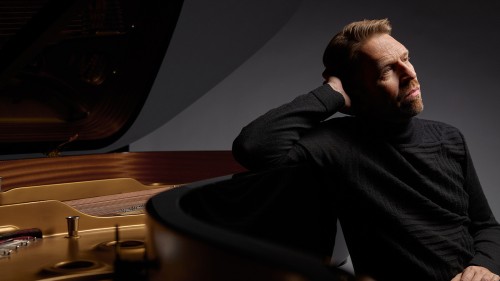
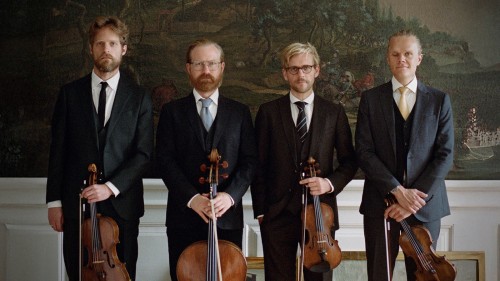

at NEC's Jordan Hall in Boston
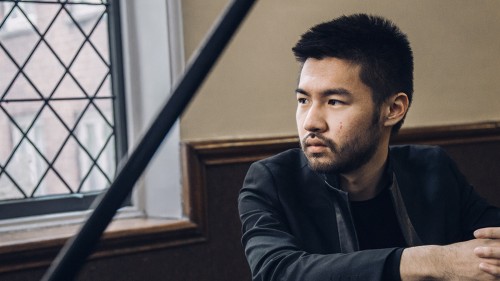
Poetry and Fairy Tales
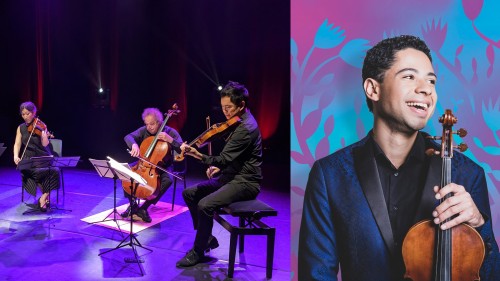
Stay in touch with Celebrity Series of Boston and get the latest.
Email Updates Sign up for Email Updates